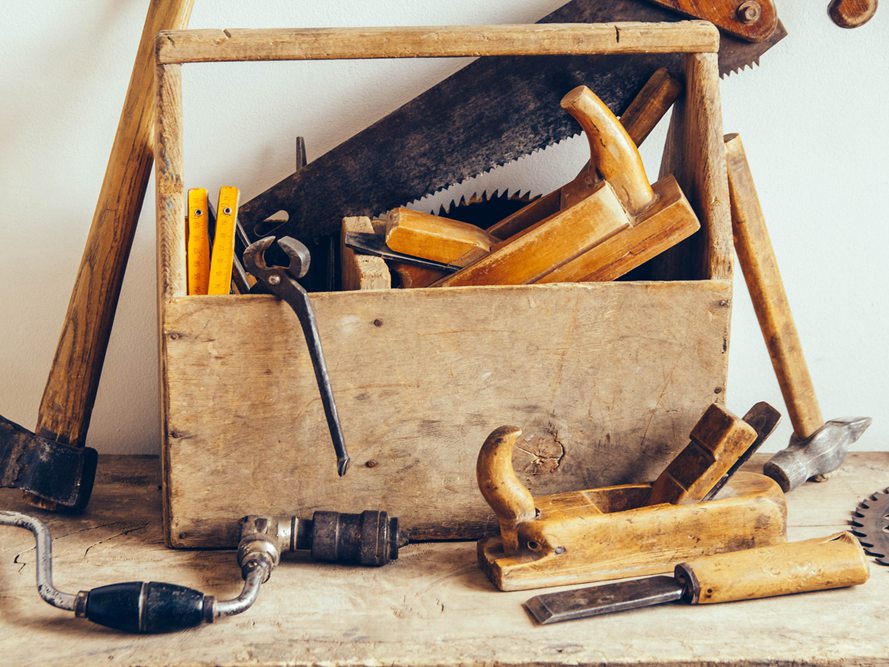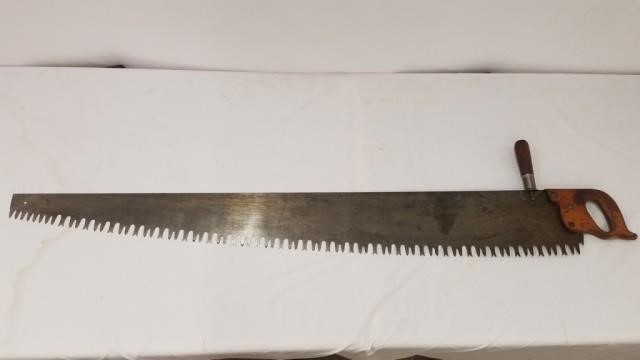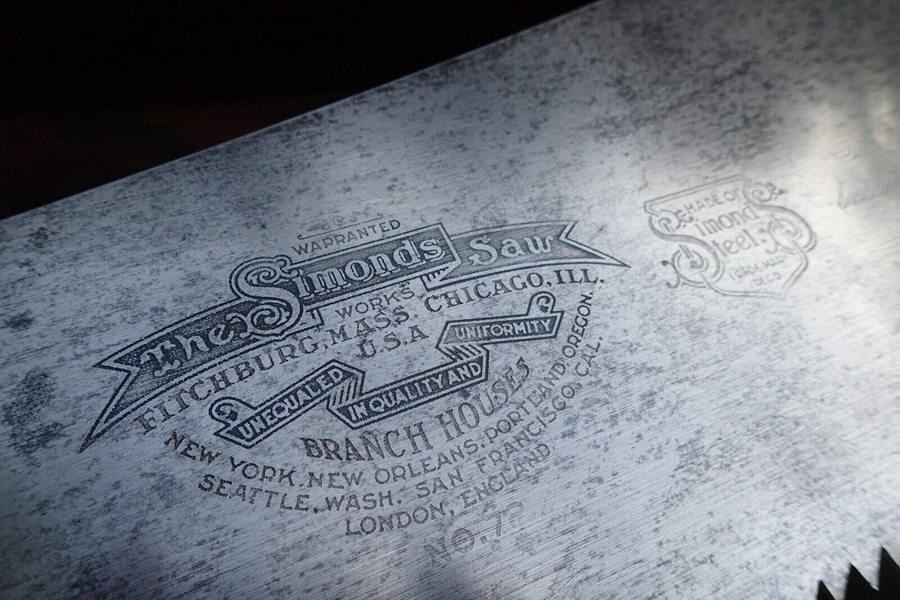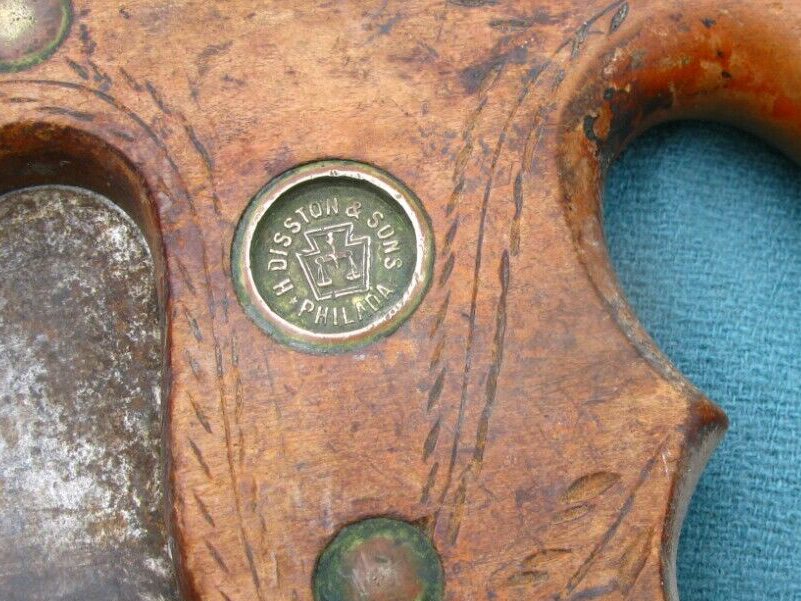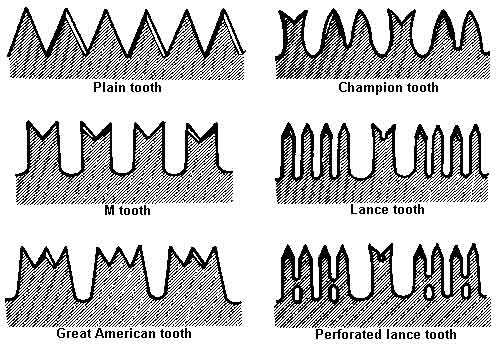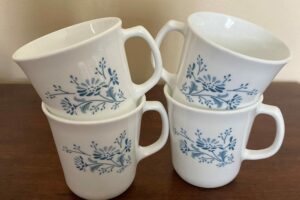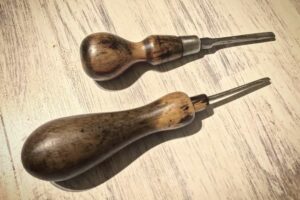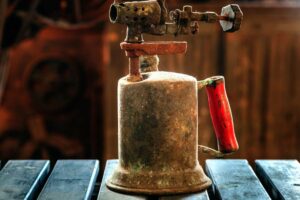Antique crosscut saws are revered for their craftsmanship and historical significance, making them a fascinating topic for collectors and woodworking enthusiasts alike. Understanding how to identify and properly value these remarkable tools is essential for anyone interested in delving into their enduring charm. This article aims to help you acquire the knowledge and skills required to identify and assess the worth of these treasured woodworking tools.
Distinguishing between an antique crosscut saw and its modern counterpart requires a keen eye for detail, as well as familiarity with the characteristics that make them unique. To assist you in honing your identification prowess, we will discuss the specific features that can offer clues to a saw’s age, such as the presence of medallions, tooth size differences, and the quality of steel used. Additionally, factors like design, materials, and the overall condition will play a significant role in determining a saw’s value.
As you explore the world of antique crosscut saws, you’ll not only gain an appreciation for the artistry and skill that went into their creation, but also develop an eye for distinguishing the signs of age and pedigree that make these tools so enchanting to collectors, historians, and artisans alike.
Table of Contents
History of Crosscut Saws
Stone Age to Neolithic Age
During the Stone Age, early humans used various tools made from materials such as stones and bone for cutting and shaping wood. It was in the Neolithic age that crosscut saws became more prevalent. These early crosscut saws were crafted from durable materials and were designed to make woodworking more efficient.
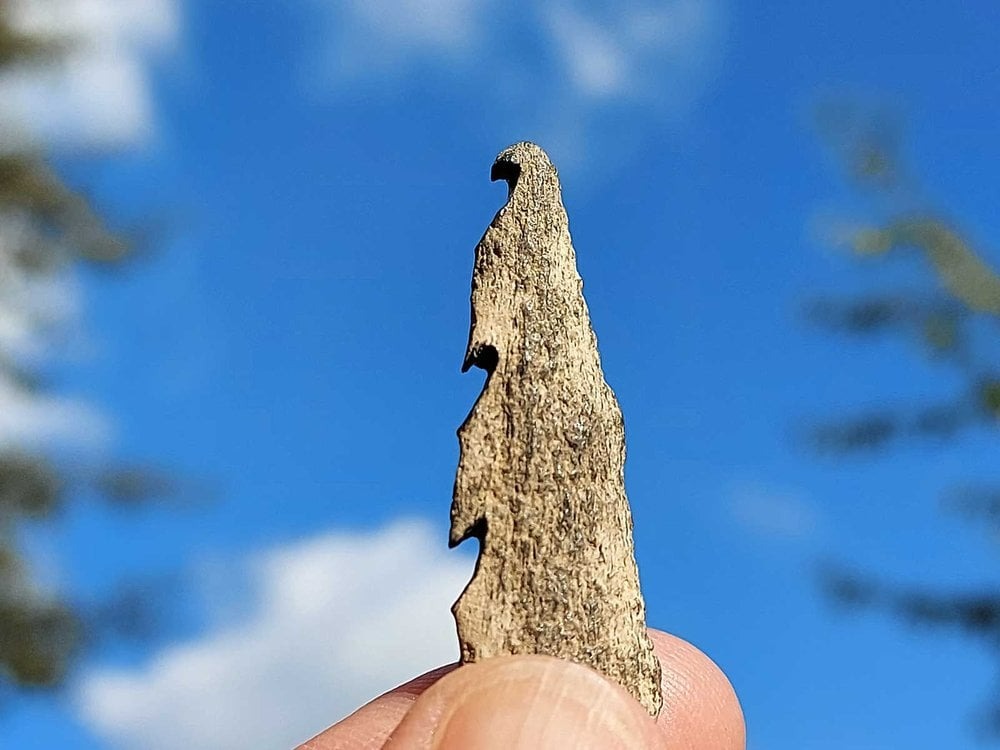
Ancient Egyptians to Greek Mythology
Crosscut saws were widely used in the ancient world, particularly by the Egyptians. They found uses for these saws in a variety of woodworking projects, from constructing elaborate coffins to crafting intricate furniture pieces. In Greek mythology, the crosscut saw is mentioned in the story of Perdix, who created the first saw by carefully observing the shape of a fish’s jaw.
Lu Ban to Chinese Legend
According to Chinese legend, Lu Ban, a structural engineer, invented the crosscut saw. The story goes that he was inspired by the texture of a leaf and transformed it into a tree-cutting tool. This invention played a pivotal role in the advancement of carpentry and woodworking in ancient China, making it easier for craftsmen to create complex structures and art pieces.
Harvey Peace Company to Antique Hand Saws
Fast forward to the 19th century, the Harvey Peace Company played a significant role in the evolution of crosscut saws. They produced high-quality hand saws made from alloyed steel blades, featuring unique branding and enhanced precision. These antique hand saws are now incredibly valuable, with some dating back to the 1700s fetching prices between $1,500 and $2,000.
In summary, the history of crosscut saws spans from the Neolithic age to modern times, with multiple cultures and inventors contributing to its development. As you explore antique crosscut saws, keep in mind their rich history and the craftsmanship that has gone into their creation over the centuries.
Types of Antique Crosscut Saws
Single Handle Crosscut Saw
These saws are typically used by one person and have a handle on just one end of the blade. They are primarily designed for cutting across the grain of the wood, as opposed to rip saws, which are used for cutting along the grain. A single handle crosscut saw is ideal for smaller projects that can be managed by one person. The antique versions of this type are often characterized by their unique handle designs and features, which can affect their value.
Two-Person Crosscut Saw
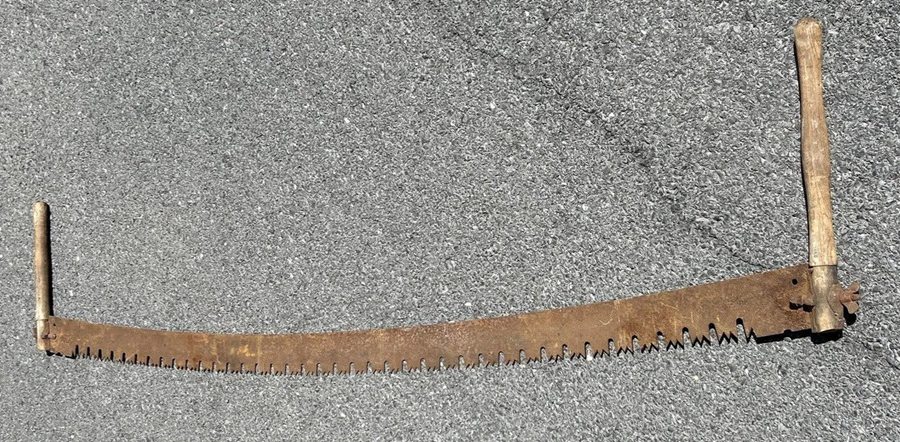
The two-person crosscut saw is a larger version of the single handle saw, with handles on both ends of the blade. As the name suggests, this type of saw is designed for use by two people and is often used for felling trees or cutting large logs. These saws can be as long as 12 feet and their size, rarity, and condition can impact their worth. When identifying a two-person crosscut saw, pay close attention to the handles and the design of the teeth, which can help in determining its age and value.
Panel Saw
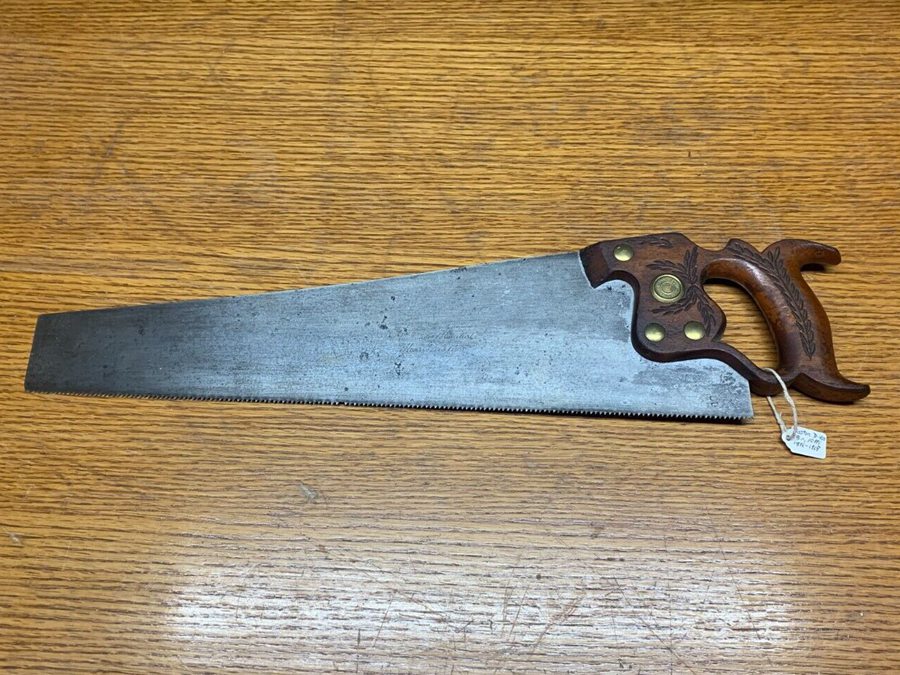
A panel saw is a smaller, lighter crosscut saw specifically designed for cutting thinner boards and panels. They often have finer teeth than other types of crosscut saws to help ensure a clean, smooth cut. When identifying antique panel saws, look for distinguishing features such as handle shape, blade design, and the presence of any unique markings or branding.
Framed Saw
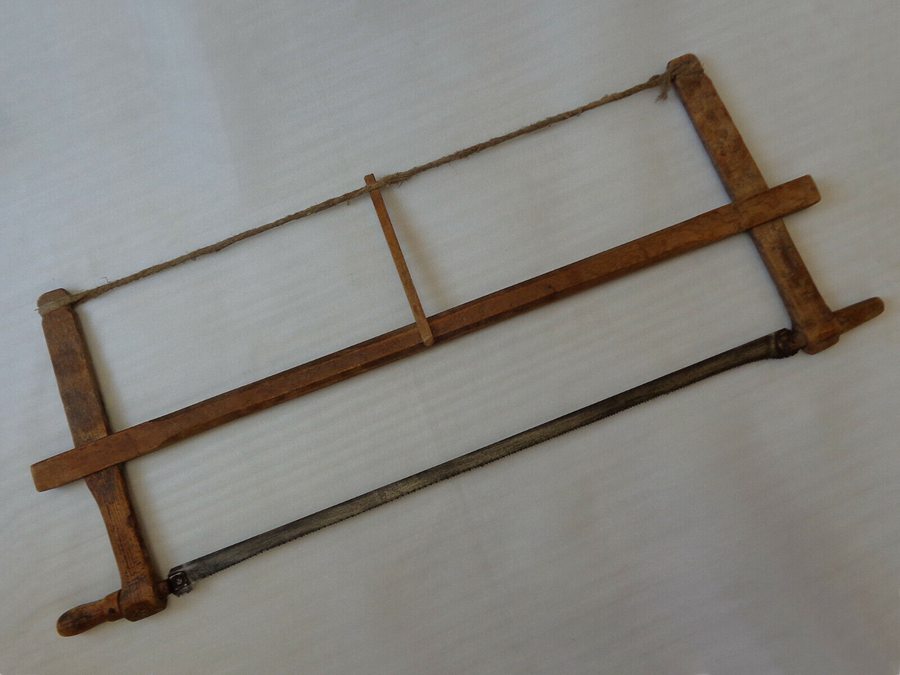
The framed saw, also known as a bow saw, is a type of crosscut saw designed for cutting curves and intricate shapes into wood. It features a narrow blade held within a U-shaped frame, with a handle on one end. This design allows for more precise control when cutting. In antique versions, look for details such as the construction of the frame and the materials used, as these can impact the saw’s value.
Tenon Saw
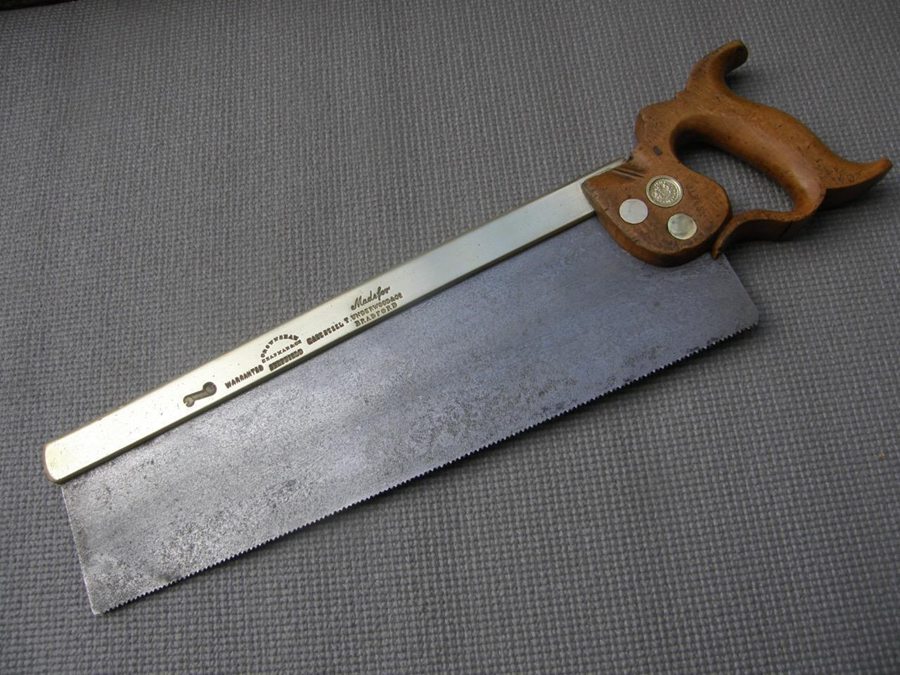
The tenon saw is a type of crosscut saw that is frequently used in woodworking for creating joints, specifically tenon joints. These saws have a flat, steel back to provide rigidity and support while cutting. Antique tenon saws often have decorative handles made of materials like brass or exotic woods, adding to their appeal and value.
When assessing the price of an antique crosscut saw, consider factors such as:
- Age and date of the saw
- Material, size, and type
- Unique design elements or markings
- Overall condition and wear
Remember, a confident and knowledgeable approach to identifying antique crosscut saws can help ensure you accurately understand their value and importance.
Brands and Manufacturers
When identifying and valuing antique crosscut saws, brands and manufacturers play a significant role. Some renowned brands are known for producing high-quality hand saws, appreciated by collectors and enthusiasts alike. In this section, we will discuss four major antique crosscut saw brands: Henry Disston and Disston & Son, E.C. Atkins, Simmonds, and Keystone Saw Works.
Henry Disston and Disston & Son

Henry Disston, a famous saw maker, founded Disston & Son in 1840 in Philadelphia. This company became a dominant player in the saw manufacturing industry. Their saws are highly valued due to their excellent craftsmanship and long-lasting performance. Remember to look for the Disston & Son’s trademark, as that would be a sign of a genuine high-quality saw.
Valuation Table for Disston Saw
| Condition | Price Range |
|---|---|
| Excellent | $350 – $500 |
| Good | $200 – $300 |
| Fair | $100 – $150 |
E.C. Atkins
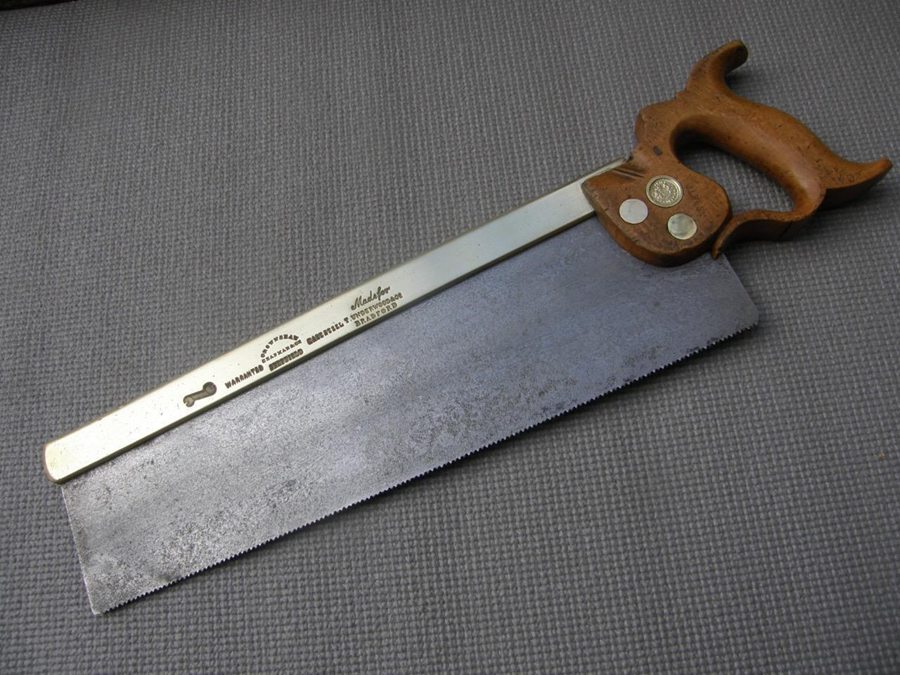
Elisha C. Atkins founded the E.C. Atkins company in 1855 in Indianapolis. They produced a wide range of cutting tools, including crosscut saws. These saws are known for their uncompromising quality and innovative designs, making them a desirable collectible item. Keep an eye out for their unique logo and trademark on the saw.
Valuation Table for E.C. Atkins Saw
| Condition | Price Range |
|---|---|
| Excellent | $300 – $450 |
| Good | $150 – $250 |
| Fair | $100 – $125 |
Simmonds
Simmonds Manufacturing Company was established in 1908 in the United States. Although not as renowned as the other brands discussed here, Simmonds saws are appreciated among collectors. When searching for a Simmonds saw, look for their trademark and any other identifying marks that would indicate its authenticity.
Valuation Table for Simmonds Saw
| Condition | Price Range |
|---|---|
| Excellent | $250 – $400 |
| Good | $150 – $225 |
| Fair | $75 – $125 |
Keystone Saw Works
Keystone Saw Works was a subsidiary of Disston & Son, founded by Henry Disston’s son Hamilton Disston. Based in Philadelphia, this company also produced high-quality crosscut saws. You can recognize a genuine Keystone saw by checking for any identifying marks or signs, like the distinctive Keystone logo.
Valuation Table for Keystone Saw Works
| Condition | Price Range |
|---|---|
| Excellent | $200 – $350 |
| Good | $100 – $200 |
| Fair | $50 – $100 |
By familiarizing yourself with these brands and their distinctive features, you will have an easier time identifying and evaluating antique crosscut saws. Armed with this knowledge, you can make informed and accurate assessments when valuing antique saws.
Identification Tips
Medallion
Check the saw’s medallion, a small metallic piece typically found near the handle. This can provide valuable information about the saw’s manufacturer and age. Look for distinctive markings, logos, or text that might indicate the company or time period of the crosscut saw’s production.
Design Features
Pay attention to the design features of the saw, such as the handle’s shape, blade’s contour, and teeth configuration. Antique crosscut saws often have hand-carved wooden handles or cast-iron ones, while the blade’s taper may signify its intended purpose.
Signature Design
Look for any distinguishing elements that might be specific to a particular craftsman or manufacturer. These features can help you narrow down the saw’s origin and, consequently, its value. For example, some sought-after saws have distinctive tooth patterns or engraved artwork on the blade or handle.
Age and Condition
Estimate the age and condition by examining the physical wear and tear on the saw. Older or rarer antique crosscut saws are generally more valuable. Check for rust, broken teeth, or heavily weathered wooden handles as signs of the saw’s age. However, note that a saw in poor condition may not hold as much value as one that’s been better preserved.
Size
Consider the size of the saw when assessing its value. Larger saws, like the two-man crosscut saw, are more rare and were likely used for significant projects, making them potentially more valuable. Measure the length of the blade or use a standard reference to determine its size category.
Tooth Pattern
Observe the tooth pattern of the saw, noting any differences that indicate a specific use or craftsmanship. Crosscut saw teeth are typically filed at an angle and resemble a row of knives, whereas rip saw teeth appear more like a row of chisels. Unique or rare tooth configurations can add value to the crosscut saw.
Material and Quality
Blade Material
When identifying antique crosscut saws, pay attention to the blade material. Antique crosscut saws are made of high-quality steel to ensure durability and resilience. You can spot these by looking for features like taper-ground blades, where the toe is narrow, and the heel is wide. Also, observe any aging signs like rust and slight chips.
Antique crosscut saws have thin, light, and easy-to-use straight-backed blades, distinguishing them from more contemporary versions with rigid, machine-shaped teeth. Value-wise, plain slanted crosscut teeth have a high value of $800 – 900, while curved, elongated crosscut teeth from newer saws have a lower value of $100 – 150.
| Teeth Type | Value |
|---|---|
| Plain, Slanted | $800 – 900 |
| Curved, Elongated | $100 – 150 |
Handle Material
When examining the handles of antique crosscut saws, you’ll often find they are made of wood. Wooden handles were used for their durability and comfortable grip. Pay attention to the wood’s condition and any signs of aging, such as cracks or marks indicating use. These signs can further confirm a saw’s authenticity and give insight into its value.
In contrast, modern crosscut saws might feature plastic handles or other synthetic materials. These newer materials can help determine that a saw is not an authentic antique and might have a significantly lower value.
To summarize this section, look for the following features when identifying and valuing antique crosscut saws:
- High-quality steel, taper-ground blades
- Thin, light, easy-to-use straight-backed blades with plain slanted teeth
- Wooden handle material showing signs of aging and use
- Slanted teeth value: $800 – 900
- Curved, elongated teeth value: $100 – 150
Determining Value
Demand and Rarity
Demand and rarity play a significant role in determining the value of an antique crosscut saw. Since these saws are unique, their value is strongly influenced by collectors’ desire to own them. Additionally, the rarer the saw, the higher its value may be.
Quality
You should consider the overall quality of an antique crosscut saw when determining its value. An indication of high-quality craftsmanship can be seen in elements such as materials used, design style, and construction. High-quality saws typically command higher prices than those of lesser quality.
Condition
The overall condition of a saw directly impacts its value. While some signs of age and wear are expected in antique items, excessive damage, rust, or broken parts can negatively affect its worth. A well-preserved antique saw will generally fetch a higher price than one in poor condition.
Brand and History
Another factor to consider is the brand and history of the crosscut saw. Established and well-known brands are more likely to have a higher value. Additionally, if the saw has a documented history or provenance, such as being used in a notable event or belonging to a famous person, this can add to its attractiveness and, ultimately, its worth.
Size and Age
The size of a crosscut saw can impact its value, with larger saws often being more valuable due to their increased utility and rarity. Moreover, age is a crucial factor in determining an antique crosscut saw’s value. Generally speaking, older saws are considered more valuable; for example, a saw built before 1950 would be considered an antique.
To help you identify and evaluate an antique crosscut saw, take note of the following aspects:
- Demand and Rarity: Is there a high demand for the saw among collectors? Is it a rare find?
- Quality: Does the saw display high-quality craftsmanship and materials?
- Condition: Is the saw well-preserved or does it show excessive wear and damage?
- Brand and History: Does the saw come from a well-known manufacturer or have an interesting history?
- Size and Age: What is the size of the saw, and how old is it?
Considering these factors will help you determine the value of an antique crosscut saw, ensuring that you can make an informed decision when buying, selling, or preserving these unique tools.
Collecting Antique Crosscut Saws
Where to Buy
When starting your collection of antique crosscut saws, explore various sources to find genuine and valuable pieces. You might begin with family heirlooms, which often hold both sentimental and historical value. Next, consider reputable dealers or antique shops, where expert advice and authentic items are available.
Online platforms such as auction websites, collectors’ forums, and social media groups also offer opportunities to connect with other collectors and browse available antique crosscut saws. Be sure to review sellers’ histories and engage with experienced collectors to ensure a reliable and informed purchase.
Avoiding Scams
To avoid scams and make educated decisions, familiarize yourself with antique crosscut saw identification traits. Pay attention to the handle, blade, and teeth of the saw. Older hand saws typically have larger teeth compared to modern ones, and antique saws may have distinct machine marks, burrs, or medallions with the manufacturer’s details.
When dealing with online sellers, practice caution by:
- Examining multiple pictures of the saw, including close-ups of the handle, blade, and teeth
- Asking for additional information or images if necessary
- Researching the seller’s reputation, reviews, and transaction history
Building a Collection
As you build your antique crosscut saw collection, keep the following tips in mind:
- Determine your focus: Decide whether you wish to collect saws from specific manufacturers, time periods, or regions
- Set a budget: Antique crosscut saws can range in value based on age, condition, and rarity, so plan your spending accordingly
- Display and care: Properly store and display your saws to maintain their condition and showcase their beauty
By following these guidelines, carefully monitoring the market, and acquiring knowledge and experience in antique crosscut saws, you can successfully build a valuable and unique collection.
FAQ
Q: How can I identify an antique crosscut saw?
A: To identify an antique crosscut saw, look for the following features:
- The teeth on older hand saws are typically larger than those on modern hand saws
- Check for signs of aging, such as rust and slight chips
- High-quality steel construction, with the toe being narrower than the heel
Q: Where can I find the manufacturer’s details and date of manufacture?
A: If your crosscut saw has a medallion, you can find the manufacturer’s details and the date of manufacture stamped there.
Q: How do the materials used in antique crosscut saws affect their value?
A: The materials used in antique crosscut saws can impact their value. Saws made out of higher-quality materials, such as steel or iron, are usually worth more than those made from lower-quality materials like wood.
Q: Does size matter when valuing an antique crosscut saw?
A: Yes, the size of the saw can affect its value. Larger saws are typically more valuable because they are rarer and were likely used for larger projects.
Q: How can the design and age of the crosscut saw help determine its value?
A: The design and age of a crosscut saw can be indicators of its value. Older, handmade saws are considered rare and precious, making them more valuable. Also, unique or intricate designs can add to the saw’s worth.
Remember to do your research and consult with experts when determining the value of an antique crosscut saw.

